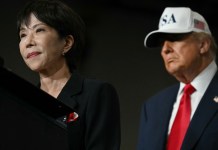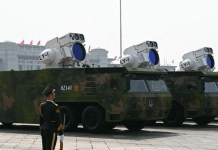US and China rivalry has put the world on the edge as nations are forced to pick sides between the two superpowers. This is more than a trade war. It is a battle for global influence. And APEC is the recent witness to the two countries spat. While the United States and China are jostling to build alliances and shut the other out of power, their war is much more than trade.
- European Union Needs “EU NATO” To Protect From Russia, China, US Threats: Macron
- The US Driving India, China, Russia to Abandon the Dollar; Can EURO Be a Replacement?
Tensions have sharpened over a board range of diplomatic and military issues such as the South China Sea, Taiwan and economic sanctions on Iran and North Korea. As the US continues to accuse China of engaging in unfair trade practices, Beijing is unmoved.
According to a report by the Office of the United States Trade Representative, China fundamentally has not altered its acts, policies and practices related to technology transfer, intellectual property and innovation. US President Donald Trump continues to warn that he will tax nearly all Chinese imports if Beijing does not open its market to American companies and end its unfair practices. In the winter of 2017, the World Economic Forum held China as the largest closed economy in the world.
China and US Relations
Over the past 50 years, the US and China relationship has been based on complementary economic ties. According to Forbes, they made cheap clothes and toys and other widgets for American malls, and US households were loaded with low-cost Made in China goods.
“Like Washington’s trade and economic pacts with Europe and Japan after World War II, the bilateral relationship between the US and China served as a deterrent for other conflicting parts of the relationship, such as capitalist democracy versus Communism and geopolitical matters at the height of the Cold War.
Now, the relationship with China is turning more combative in many dimensions. Barclay’s economist Mike Gapen said, “Trump’s trade policy, is stuck in a vortex at the moment, with disagreement amongst US policymakers over the ultimate objectives and appropriate tools to generate a desirable outcome.”
No one Ready to Take Sides
To counter China, the United States has expanded European imports of US goods. And this has worried Beijing as it has been working to strengthen its ties with Europe. When the US and China first imposed the first tranche of tariffs on each other, China’s Foreign Minister Wang Yi warned Europe not to ‘stab China in the back’ because Beijing was at the forefront of efforts to protect the global trade regime.
According to the South China Morning Post, the deal between Washington and Brussels in late July alleviated the tensions between the US and the EU. Many in Europe are wary about getting too close to the US.
China is trying to woo the Philippines with President Xi signing 29 trade and investment deals with the country. Canada has made it clear that it would freely enter into formal trade negotiations with China despite an attempt by the United States to exercise leverage over such action.
Meanwhile, Ryan Hass, a China analyst at the Brookings Institute has expressed concerns. “Both countries (US and China) are becoming entrenched in their narratives and having increasing difficulty finding a common ground.
But virtually no country in Asia wants to be exclusively aligned with either power.” Washington is rallying Southeast Asian nations to stand firm against Beijing over its expansive territorial claims and military buildup in the disputed South China Sea. But countries are shy of taking a stance.




